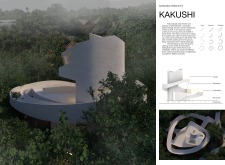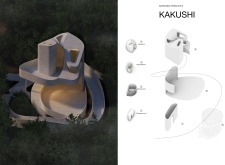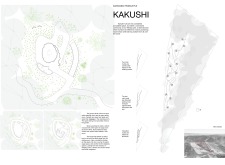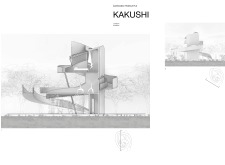5 key facts about this project
The Cambodian Hideout Hut, known as KAKUSHI, is located in a dense forest setting that serves as a backdrop for its design. The project creates a mobile community that emphasizes interaction with the natural environment. By using a system of elevated pathways, KAKUSHI fosters a close relationship between the huts and the surrounding landscape. The design is meant to support a variety of activities and promote sustainability, making it a distinctive addition to its setting.
Design Concept
At the heart of KAKUSHI is a series of narrow trails that function as both circulation routes and architectural elements. These elevated pathways reduce the impact on the forest floor. They also offer visitors views of the landscape, enriching their experience. The spiraled paths lead up through the community, providing diverse perspectives and interactions as users move from one space to another.
Functional Spaces
On the ground level, KAKUSHI provides essential facilities. A cleaning room allows visitors to maintain personal hygiene and store their belongings. An open eating area encourages community interaction, with views of the adjacent garden enhancing the dining experience. These practical spaces are designed to meet the basic needs of guests while letting them connect with nature.
Multi-Level Engagement
As individuals make their way up the ramp, they arrive at an open-air yoga room on the second level. This space promotes wellness and mindfulness, surrounded by trees that create a tranquil environment. Practicing yoga here connects visitors with nature, encouraging relaxation and physical well-being. The thoughtful arrangement of this room emphasizes the project’s goal of integrating healthy living with a natural atmosphere.
Spatial Division
The third floor features a resting room that is divided into two main areas: an aerial yoga space and a sleeping area. This separation provides flexibility in how the space is used and offers privacy for those sleeping. Large windows in the sleeping room allow occupants to gaze into the forest, reinforcing the connection between people and their environment.
KAKUSHI achieves a thoughtful combination of human activity and the natural world, characterized by a careful balance of raised pathways, open-air spaces, and functional zones that invite engagement with the forest.























































